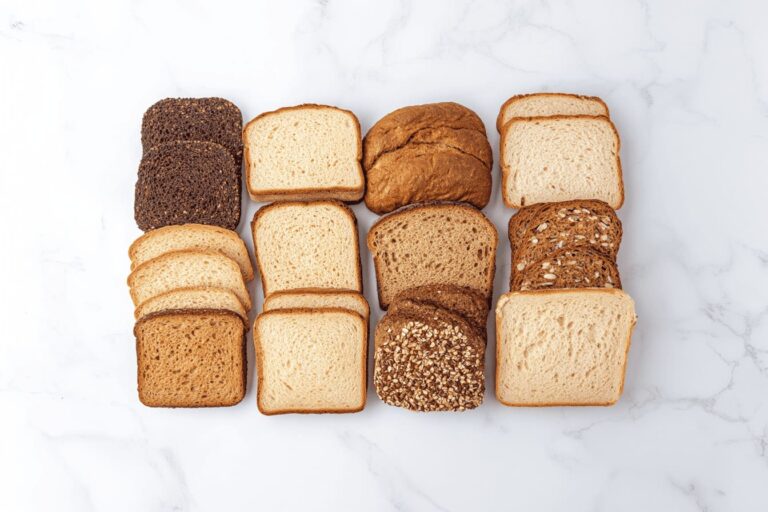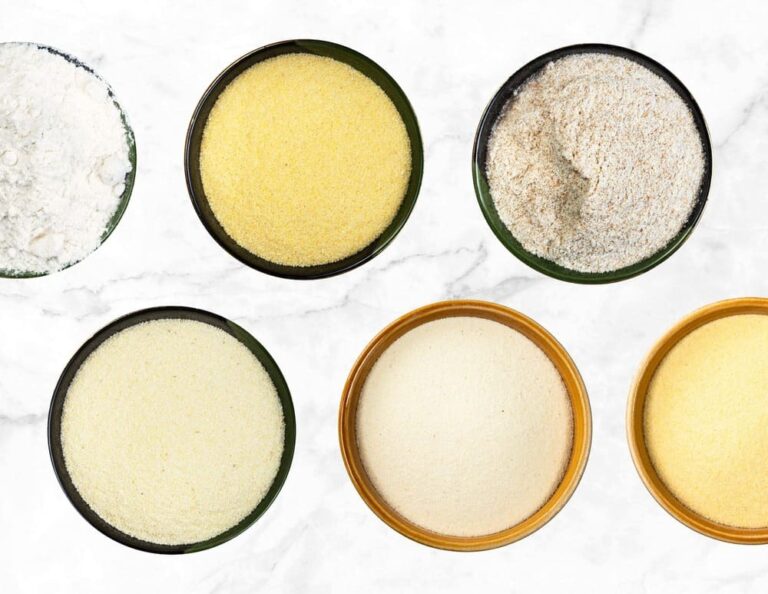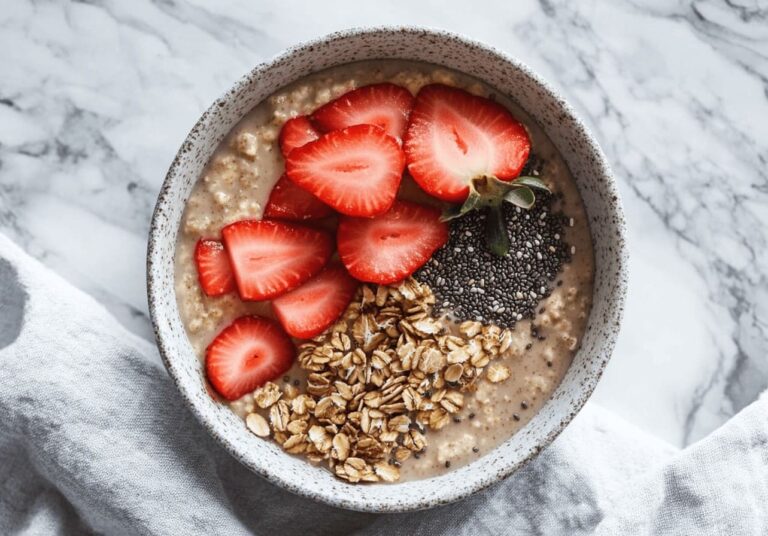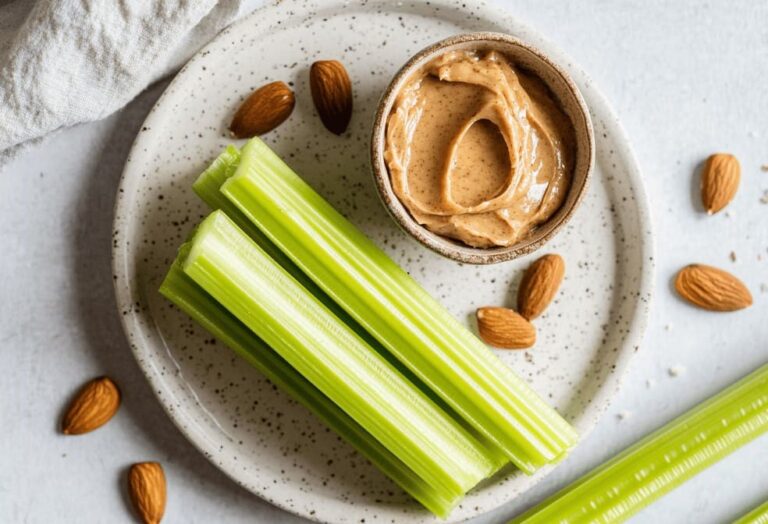(PDF Free Download) Pregnancy Diet Chart Month-by-Month
This post may contain affiliate links. That means if you click and buy, I may receive a small commission (at zero cost to you). Please see my full disclosure policy for more details.
Your ultimate month-by-month pregnancy diet chart is here! Packed with key nutrients, meal ideas, and tips tailored for every stage of your journey. Snag your free PDF download now and stick it on your fridge for the easiest pregnancy guide ever!
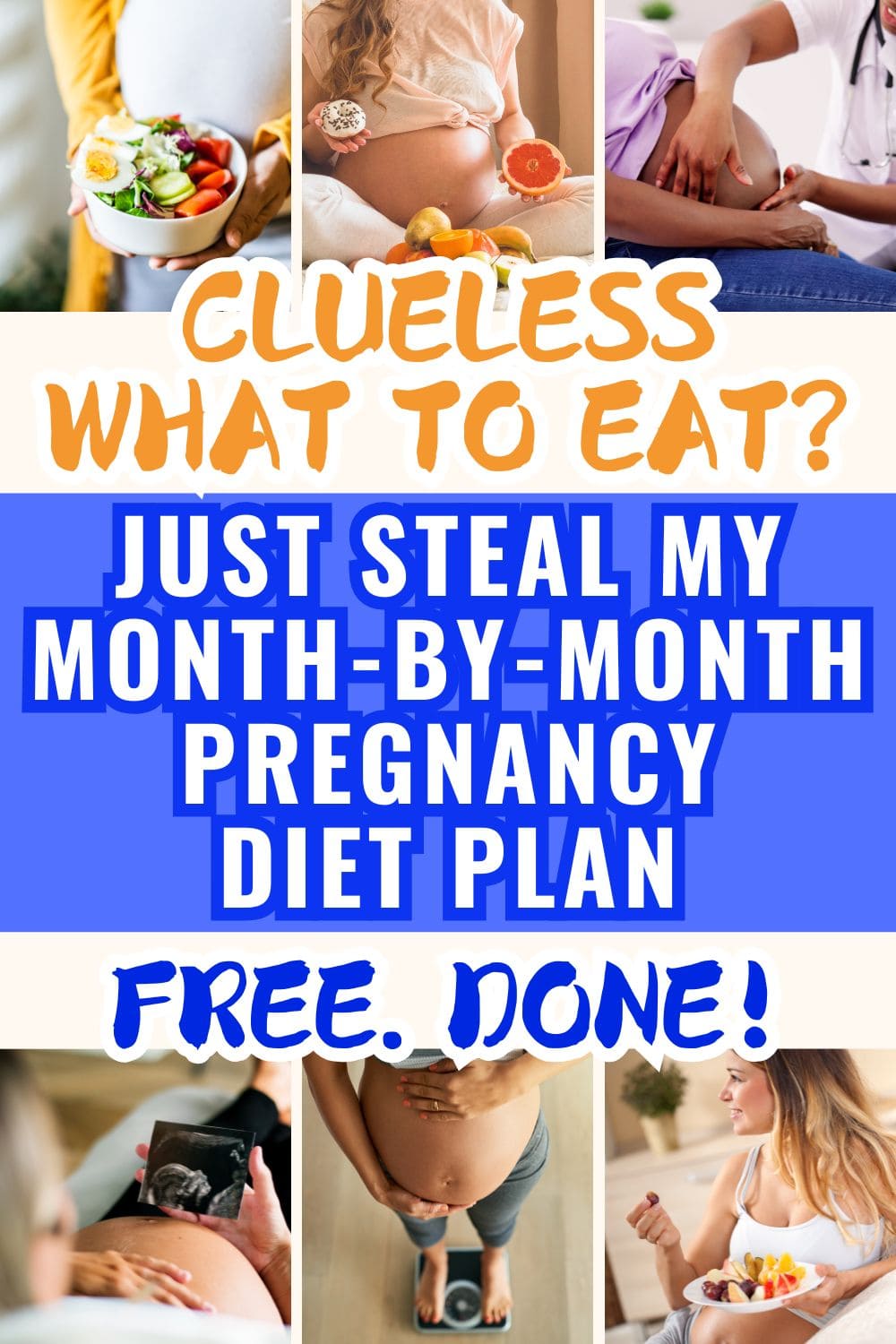
Your pregnancy is a journey unlike any other—a time when every bite you take helps shape the miracle growing inside you.
Keeping up with what to eat (and what not to!) can feel overwhelming, especially when cravings, nausea, and a growing baby all demand your attention.
What if you had a simple month-by-month pregnancy diet chart to take the guesswork out of your pregnancy diet? Imagine knowing exactly which nutrients your body needs, which foods to focus on, and how to tackle common challenges like morning sickness or third-trimester heartburn.
I love keeping things simple, easy, and organized—especially during pregnancy. That’s why I’ve created this month-by-month pregnancy diet chart (something I wish I had back then), to walk you through exactly what your body and baby need every step of the way.
Month-by-Month Pregnancy Diet Chart
What should I eat during pregnancy month by month?
Disclaimer: This article is for informational purposes only and should not replace professional medical advice. Every pregnancy is unique, and nutritional needs may vary. Always consult your doctor, midwife, or a registered dietitian promptly before making changes to your diet or addressing specific concerns.
Month 1 (Weeks 1-4)
Hello first trimester! By the end of the month, your little one will be slightly smaller than a single grain of rice, with their brain, spinal cord, and heart starting to take shape.
You may not look or feel very different yet, but subtle changes are happening. Hormones are surging, which can bring on early signs like fatigue, breast tenderness, or mild nausea.
Related: (More Detailed) First Trimester Diet Chart – with key nutrients, serving size, meal ideas and expert tips on managing early-pregnancy symptoms
| Key Nutrients | Benefits | Food Sources |
|---|---|---|
| Folate (Vitamin B9) | Supports neural tube development and reduces the risk of birth defects. | Dark leafy greens like spinach and kale, citrus fruits, avocado, beans |
| Vitamin B6 | Helps manage nausea and promotes healthy brain development. | Eggs, bananas, sweet potatoes, salmon, sunflower seeds, and chicken breast |
| Iron | Boosts energy and supports early blood supply for you and your baby. | Lentils, fortified cereals, lean meats, tofu, and quinoa |
| Omega-3 Fatty Acids | Promotes brain and eye development for your baby. | Salmon, chia seeds, walnuts, flaxseeds, and sardines. |
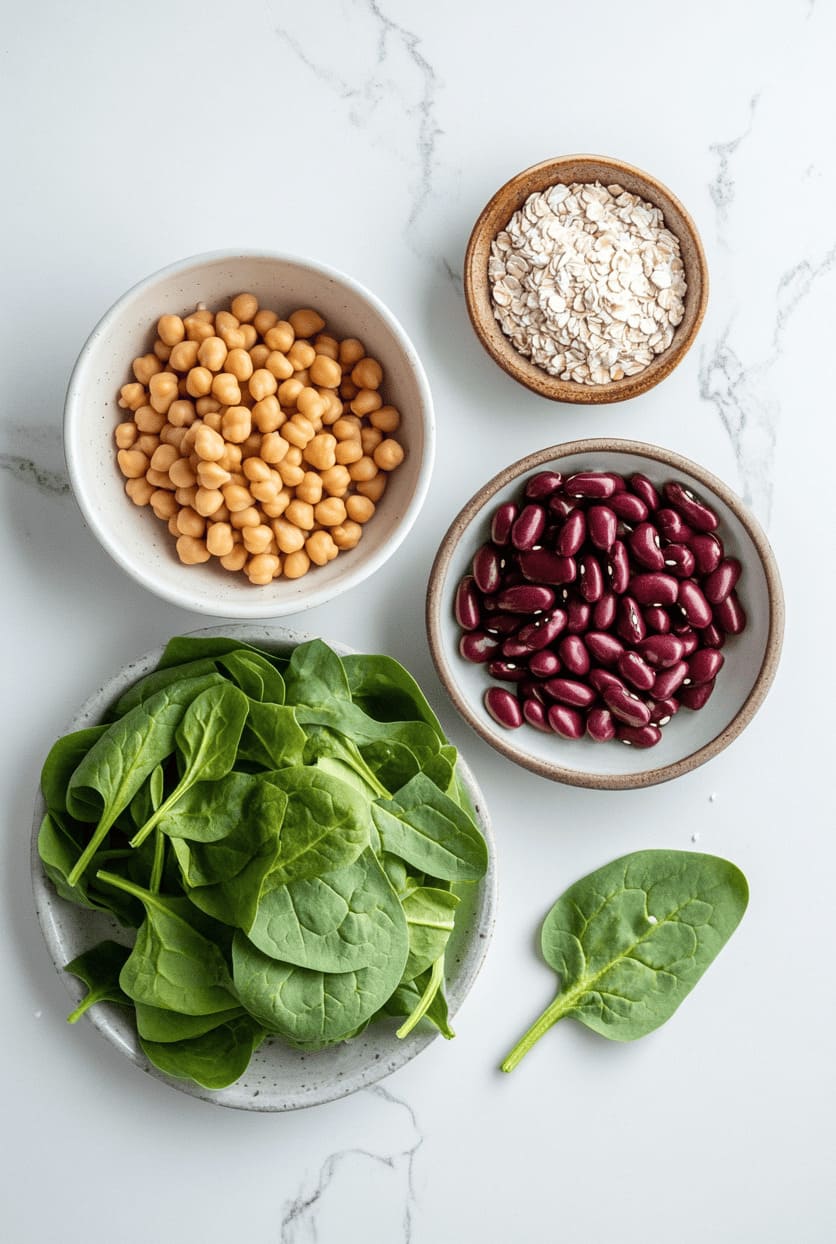
Meal Plan Example
- Breakfast: Spinach and mushroom omelet with whole-grain toast, topped with avocado slices.
- Snack: A banana paired with a handful of roasted almonds.
- Lunch: Lentil and vegetable stew with carrots, zucchini, and tomatoes, served alongside a small quinoa salad.
- Snack: A boiled egg and whole-grain crackers with a dollop of hummus.
- Dinner: Grilled salmon or chicken breast, served with roasted sweet potatoes and sautéed kale drizzled with olive oil.
Month 2 (Weeks 5-8)
By the end of Month 2, your baby is about the size of a blueberry, with facial features starting to form, and their heart beating. Tiny limb buds are developing into arms and legs.
For you, hormonal changes may intensify, bringing symptoms like morning sickness, food aversions, and fatigue. Focus on small, frequent meals and staying hydrated.
| Key Nutrients | Benefits | Food Sources |
|---|---|---|
| Folate (Vitamin B9) | Supports continued development of the brain and spinal cord. | Dark leafy greens like spinach and kale, citrus fruits, asparagus, black beans, and fortified cereals. |
| Vitamin B6 | Helps alleviate nausea and supports brain development. | Eggs, bananas, sweet potatoes, salmon, sunflower seeds, and chicken breast. |
| Iron | Supports red blood cell production and prevents anemia. | Lentils, lean beef, fortified cereals, tofu, quinoa, and spinach. |
| Omega-3 Fatty Acids | Promotes brain and eye development for your baby. | Salmon, chia seeds, walnuts, flaxseeds, and sardines. |
Meal Plan Example
- Breakfast: Scrambled eggs with spinach and a side of whole-grain toast topped with mashed avocado and chia seeds.
- Snack: A small handful of walnuts and a banana.
- Lunch: Grilled salmon salad with mixed greens, cherry tomatoes, cucumbers, and a drizzle of olive oil and lemon.
- Snack: Greek yogurt with a sprinkle of ground flaxseeds.
- Dinner: Lentil stew with carrots, celery, and zucchini, served over quinoa.
Get all the monthly nutritions and meal ideas you read here straight to your inbox! ↓↓
Month 3 (Weeks 9-13)
Your baby is about the size of a plum, with major organs and structures formed. Reproductive organs have started to form, but they can’t be determined on an ultrasound yet. The risk of miscarriage drops significantly.
Early pregnancy symptoms like morning sickness may begin to ease. You might notice improved energy levels.
| Key Nutrients | Benefits | Food Sources |
| Protein | Supports tissue growth and helps with muscle development. | Lean meats, eggs, tofu, beans, and dairy. |
| Calcium | Builds strong bones and teeth for your baby. | Dairy products, fortified plant-based milks, tofu, and leafy greens. |
| Vitamin D | Helps calcium absorption and supports bone health. | Fatty fish (salmon, mackerel, sardine), fortified milk, egg yolks and sunlight exposure. |
| Fiber | Supports healthy digestion and prevents constipation. | Whole grains, beans, lentils, fruits, and vegetables. |
Meal Plan Example
- Breakfast: Scrambled eggs with spinach and whole-grain toast, served with fortified milk.
- Snack: A small handful of almonds and a banana.
- Lunch: Grilled chicken breast with quinoa, roasted sweet potatoes, and broccoli.
- Snack: Greek yogurt with chia seeds and berries.
- Dinner: Baked salmon with roasted vegetables and brown rice.
You will be interested: First Trimester Diet Chart – with key nutrients, serving size, meal ideas and expert tips on managing early-pregnancy symptoms
Month 4 (Weeks 14-17)
Welcome to the second trimester! Your baby is the size of an avocado, with distinct fingers, toes, and other structures. Bones are hardening and you can now determine the gender.
Many women feel more energetic and notice an increase in appetite. Your calorie intake increases by 340 kcal, and protein intake by 10g (about a glass of milk). Your baby bump may start to show.
| Key Nutrients | Benefits | Food Sources |
| Protein | Supports muscle and tissue development for both you and your baby. | Lean meats, eggs, tofu, beans, and dairy. |
| Calcium | Builds baby’s growing bones and teeth and supports your own bone health. | Dairy products, fortified plant-based milks, tofu, and leafy greens. |
| Vitamin D | Aids calcium absorption and supports immune function. | Fatty fish, fortified milk, egg yolks, mushrooms, and sunlight exposure. |
Meal Plan Example
- Breakfast: Greek yogurt with mixed berries and a sprinkle of chia seeds.
- Snack: A boiled egg and a small handful of almonds.
- Lunch: Grilled chicken salad with spinach, cucumber, avocado, and a lemon-olive oil dressing.
- Snack: Cottage cheese with sliced bell peppers.
- Dinner: Grilled salmon with roasted sweet potatoes and steamed broccoli.
Your baby’s fingerprints form by Week 14. Those unique swirls and loops are already set long before birth, making your baby truly one of a kind!
Month 5 (Weeks 18-22)
Your baby is about the size of a banana. This month you may start to feel the baby move. Hair is growing on the baby’s head and body.
Your energy levels are usually higher with increased appetite.
| Key Nutrients | Benefits | Food Sources |
| Calcium | Supports strong bones and teeth for both you and your baby. | Dairy products, fortified plant-based milks, tofu, leafy greens. |
| Vitamin C | Helps with collagen formation for skin, blood vessels, and connective tissue. | Citrus fruits, strawberries, bell peppers, broccoli, and tomatoes. |
Meal Plan Example
- Breakfast: Greek yogurt with strawberries, chia seeds, and a drizzle of honey.
- Snack: A small handful of almonds and an orange.
- Lunch: Grilled chicken with quinoa, steamed broccoli, and a side of leafy greens.
- Snack: Bell pepper slices with hummus.
- Dinner: Grilled salmon with roasted sweet potato and a spinach salad with a lemon-olive oil dressing.

Month 6 (Weeks 23-27)
Your baby is about the size of an ear of corn, with a rapid-growing lung. Your baby will respond to external stimuli such as sounds by increasing their pulse or moving (so feel free to chat or sing to them!)
Your baby bump is growing steadily, and you may experience increased discomfort, such as back pain, leg cramps, or swelling. Your skin might stretch, which can lead to stretch marks.
| Key Nutrients | Benefits | Food Sources |
| Calcium | Strengthens baby’s bones and teeth while maintaining your bone health. | Dairy products, fortified plant-based milks, tofu, leafy greens. |
| Vitamin C | Supports collagen production for skin, blood vessels, and connective tissues. | Citrus fruits, bell peppers, strawberries, broccoli, and tomatoes. |
| Vitamin D | Enhances calcium absorption for bone and teeth development. | Fortified milk, egg yolks, fatty fish, and sunlight exposure. |
| Fiber | Prevents constipation and supports healthy digestion. | Whole grains, fruits, vegetables, legumes, and seeds. |
Meal Plan Example
- Breakfast: Scrambled eggs with sautéed spinach, whole-grain toast, and a glass of fortified orange juice.
- Snack: A small bowl of strawberries and a handful of walnuts.
- Lunch: Grilled salmon with quinoa, steamed broccoli, and a spinach and bell pepper salad with lemon dressing.
- Snack: Sliced cucumbers and carrots with hummus.
- Dinner: Baked tofu or chicken breast with roasted sweet potatoes and sautéed kale.
Did you know? By the end of your pregnancy, your baby will have around 300 bones, but many will fuse together as they grow, leaving them with 206 bones as adults! That’s why nutrients like calcium are so important throughout pregnancy—they help build those tiny, growing bones!
Month 7 (Weeks 28-31)
The third trimester is a time for rapid growth of your baby’s brain! Your baby is about the size of a head of cauliflower, weighing around 2-3 pounds. They are starting to open their eyes while continuing to gain fat to regulate body temperature after birth.
Your growing belly may lead to discomfort, such as back pain, heartburn, constipation or difficulty sleeping. As your baby grows, you may feel stronger kicks and stretches.
| Key Nutrients | Benefits | Food Sources |
| Protein | Supports your baby’s muscle growth and development. | Eggs, lean meats, fish, tofu, Greek yogurt, beans, and lentils. |
| Omega-3 Fatty Acids | Supports brain and eye development. | Salmon, walnuts, chia seeds, flaxseeds, and fortified eggs. |
| Fiber | Prevents constipation and promotes digestive health. | Fruits, vegetables, whole grains, beans, and chia seeds. |
Meal Plan Example
- Breakfast: Greek yogurt with a handful of walnuts, chia seeds, and fresh blueberries.
- Snack: A boiled egg with a slice of whole-grain toast.
- Lunch: Grilled salmon or a turkey patty with quinoa, steamed green beans, and roasted carrots.
- Snack: Sliced cucumber and bell peppers with hummus.
- Dinner: Lentil and vegetable curry with brown rice and a side of sautéed spinach.
If you love the guide so far, I have it in printable PDF for you to download here ↓↓
Month 8 (Weeks 32-35)
Your baby is about the size of a pineapple, weighing 4-5 pounds. You’ll notice increased weight gain as your baby grows exponentially during this stage.
Your uterus continues to expand, leading to backaches, heartburn, and shortness of breath. Frequent small meals become essential. You should aim for 450 kcal more calories to prepare for upcoming birth.
| Key Nutrients | Benefits | Food Sources |
| Complex Carbohydrates | Provides sustained energy and supports baby’s growth. | Quinoa, sweet potatoes, whole grains, brown rice, and legumes. |
| Protein | Builds muscle, tissue, and enzymes essential for baby’s growth. | Chicken, turkey, beans, lentils, eggs, tofu, and Greek yogurt. |
| Fiber | Prevents constipation and promotes digestive health. | Whole grains, fruits, vegetables, beans, and seeds. |
Meal Plan Example
- Breakfast: Spinach and mushroom omelet with whole-grain toast and avocado slices.
- Snack: Sliced apple with almond butter.
- Lunch: Grilled salmon or chicken breast with quinoa, roasted Brussels sprouts, and a mixed green salad.
- Snack: A small handful of mixed nuts and carrot sticks.
- Dinner: Lentil and vegetable stew with sweet potato wedges and steamed broccoli.
Your uterus grows up to 500 times its normal size during pregnancy. It starts about the size of a small pear and expands to accommodate your growing baby!
Month 9 (Weeks 36-40)
The final stretch is here! Your baby is around the size of a watermelon, weighing 6-9 pounds. Their lungs are almost fully developed, and they are settling into position for birth.
You may feel tired, heavier, and experience Braxton Hicks contractions. Your baby bump is at its peak, making movement and digestion more challenging.
| Key Nutrients | Benefits | Food Sources |
| Energy-Boosting Foods | Provides sustained energy for labor preparation. | Oats, bananas, sweet potatoes, whole grains, and nuts. |
| Hydrating Foods | Maintains fluid balance and reduces fatigue. | Plain water, watermelon, cucumbers, oranges, soups, and coconut water. |
Meal Plan Example
- Breakfast: A bowl of oatmeal topped with sliced bananas, chia seeds, and a drizzle of almond butter.
- Snack: Fresh watermelon slices and a handful of mixed nuts.
- Lunch: Grilled chicken or tofu with roasted sweet potatoes and a side of spinach and cucumber salad.
- Snack: A small smoothie with Greek yogurt, strawberries, and coconut water.
- Dinner: Lentil soup with a slice of whole-grain bread and a side of steamed broccoli.
Foods to Avoid
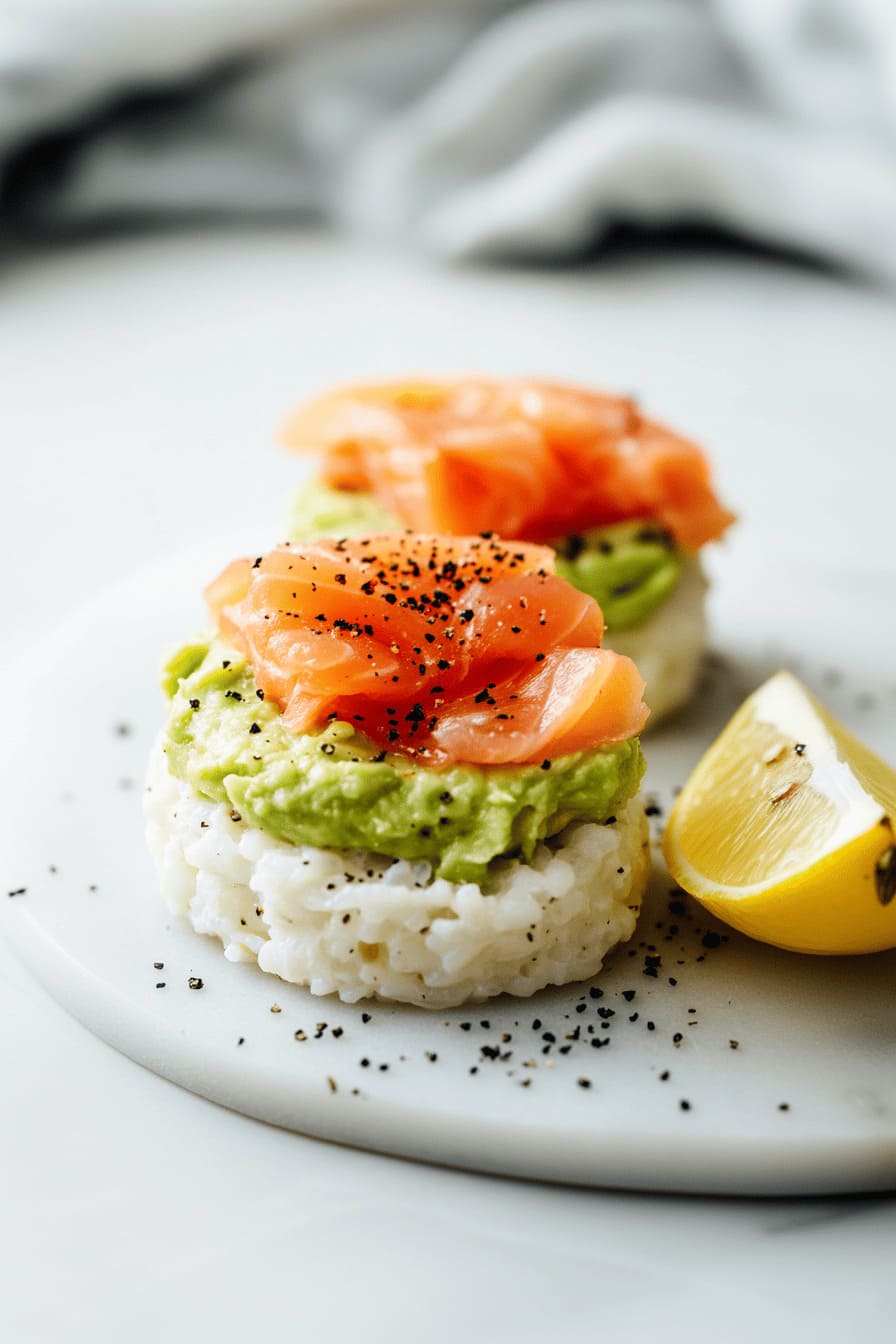
Here’s a quick guide to foods you should steer clear of to keep both you and your baby safe during pregnancy:
- Raw or Undercooked Meats
- Avoid sushi, oysters, rare meat and undercooked fish due to the risk of foodborne illnesses like toxoplasmosis, salmonella, and listeria.
- Deli Meats and Processed Meats
- Can carry listeria, which poses a risk of miscarriage or stillbirth.
- Unpasteurized Dairy and Juices
- Avoid raw milk, soft cheeses (brie, camembert), unpasteurized juices. May contain bacteria like listeria or E. coli, harmful to your baby’s development.
- Raw or Undercooked Eggs
- Risk of salmonella; skip foods like homemade mayonnaise or raw batter.
- High-Mercury Fish
- Avoid shark, swordfish, king mackerel, and tilefish, which can affect fetal brain development.
- Opt for low-mercury fish like salmon, catfish, shrimp, and canned light tuna.
- You can learn more about FDA’s advice about eating fish. Pretty good article!
- Alcohol
- No safe level during pregnancy; it can lead to fetal alcohol spectrum disorders.
- Excess Caffeine
- Limit to 200 mg/day (about one cup of coffee) to reduce miscarriage risk and avoid low birth weight.
Always prioritize safe food practices, including washing produce thoroughly, cooking foods to proper temperatures, and avoiding cross-contamination in the kitchen.
Healthy Weight Gain
What is a healthy weight gain during pregnancy?
Healthy weight gain during pregnancy depends on your pre-pregnancy weight.
If you were underweight before pregnancy, you should gain more weight. If you were overweight or obese before pregnancy, you should gain less weight. Simple!
| Body Mass Index (BMI) Before Pregnancy | Recommended Weight Gain |
|---|---|
| < 18.5 (Underweight) | 28-40 pounds |
| 18.5-24.9 (Normal weight) | 25-35 pounds |
| 25-29.9 (Overweight) | 15-25 pounds |
| ≥ 30 (Obese) | 11-20 pounds |
It’s a reminder that every pregnancy is unique, and personalized guidance from healthcare professionals is key.
For example, I was underweight during my pregnancy and developed gestational diabetes (GDM), so I had to gain less weight compared to other underweight moms, to manage my blood sugar.
Frequently-Asked Questions
Should I “eat for two”?
Eating for two can be dangerous because it can lead to excessive weight gain, gestational diabetes, high blood pressure and preeclampsia. Overeating can also result in a larger baby (macrosomia), making delivery more challenging and increasing the baby’s risk of obesity and metabolic issues later in life.
Focus on eating twice as healthy, not twice as much. Focus on nutrient-dense foods and avoid excessive weight gain
How much extra calories do I need during pregnancy?
During the second trimester, you need about 340 extra calories per day, and in the third trimester, around 450 extra calories. For twins, increase by 600 calories, and for triplets, by 900. The exact amount depends on your individual health and needs.
How can I manage my weight gain during pregnancy?
Focus on eating nutrient-rich foods, staying active (with your doctor’s approval), and following your healthcare provider’s guidelines for a healthy weight gain that supports both you and your baby.
How can I manage cravings during pregnancy?
It’s normal to have cravings, but it’s important to satisfy them with healthy, balanced options. Opt for nutrient-rich snacks that provide vitamins, minerals, and fiber while managing blood sugar levels.
Can I exercise during pregnancy?
Exercise is generally safe and beneficial during pregnancy, but it’s important to consult your healthcare provider. Activities like walking, swimming, and prenatal yoga can help manage weight gain and improve overall health.
Should I take supplements during pregnancy?
Prenatal vitamins are often recommended to ensure you get the necessary nutrients like folic acid, iron, and calcium. Always follow your doctor’s guidance regarding supplements.
Final Thought
To wrap things up, eating well and managing your weight during pregnancy is crucial for both you and your baby.
By focusing on nutritious foods and listening to your body, you’re setting yourself up for a healthy and smooth pregnancy.
Ready to make things even easier? My Month-by-Month Pregnancy Diet Chart is now available as a printable PDF, perfect for sticking on your fridge for daily reference! It’s an easy, organized guide to help you stay on track with your nutrition every step of the way.
Download it now and feel confident knowing you’re nourishing yourself and your baby!

